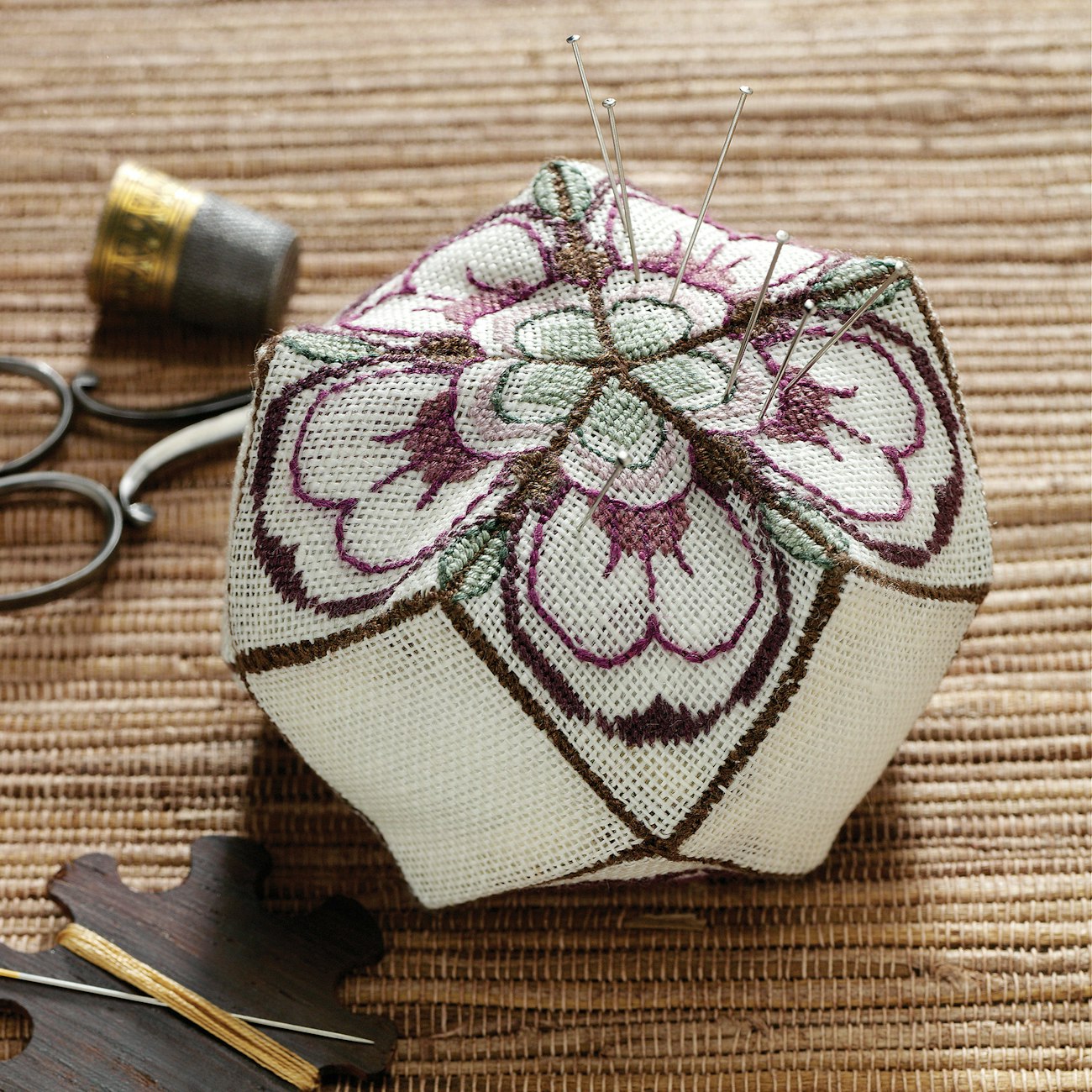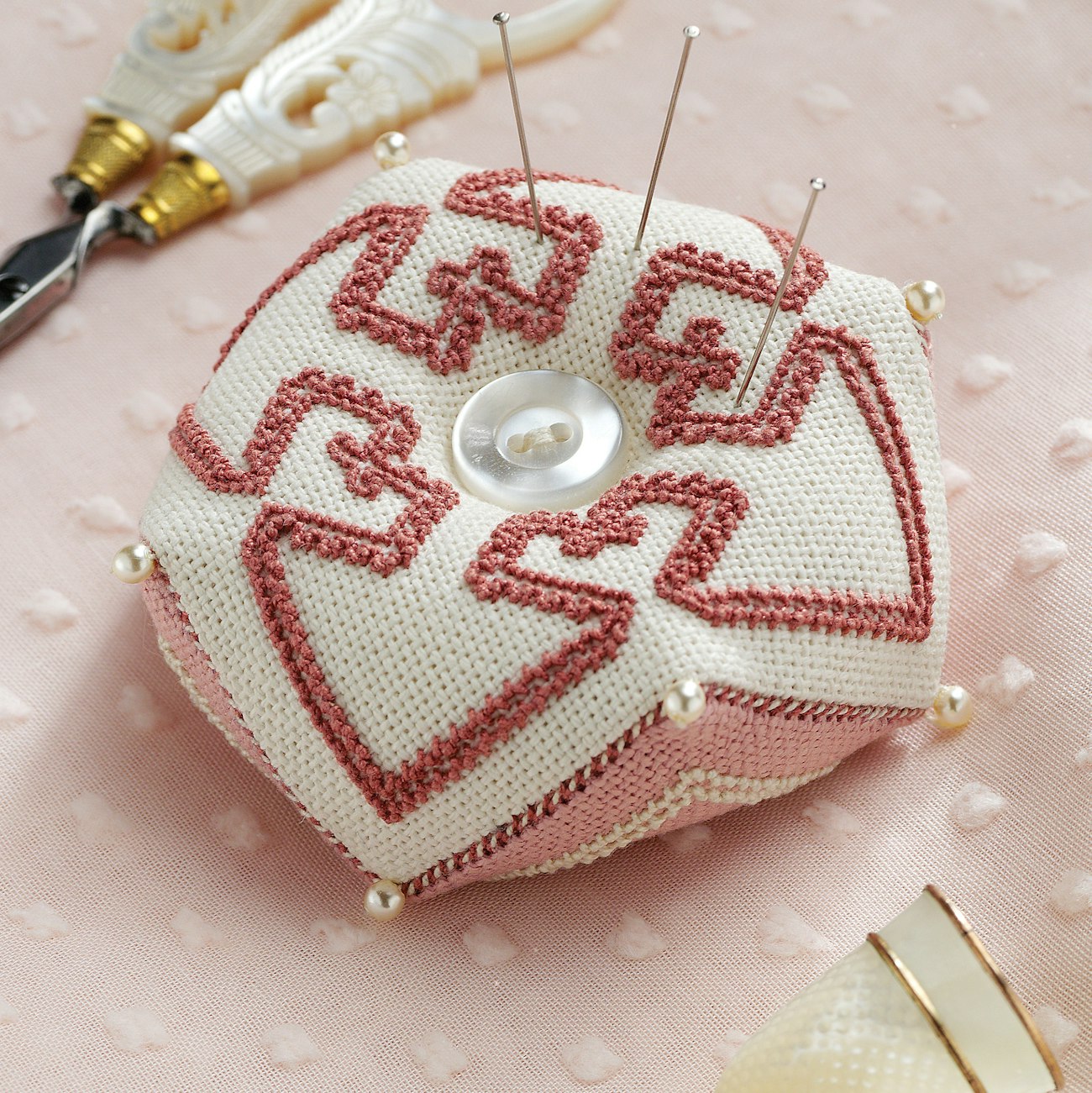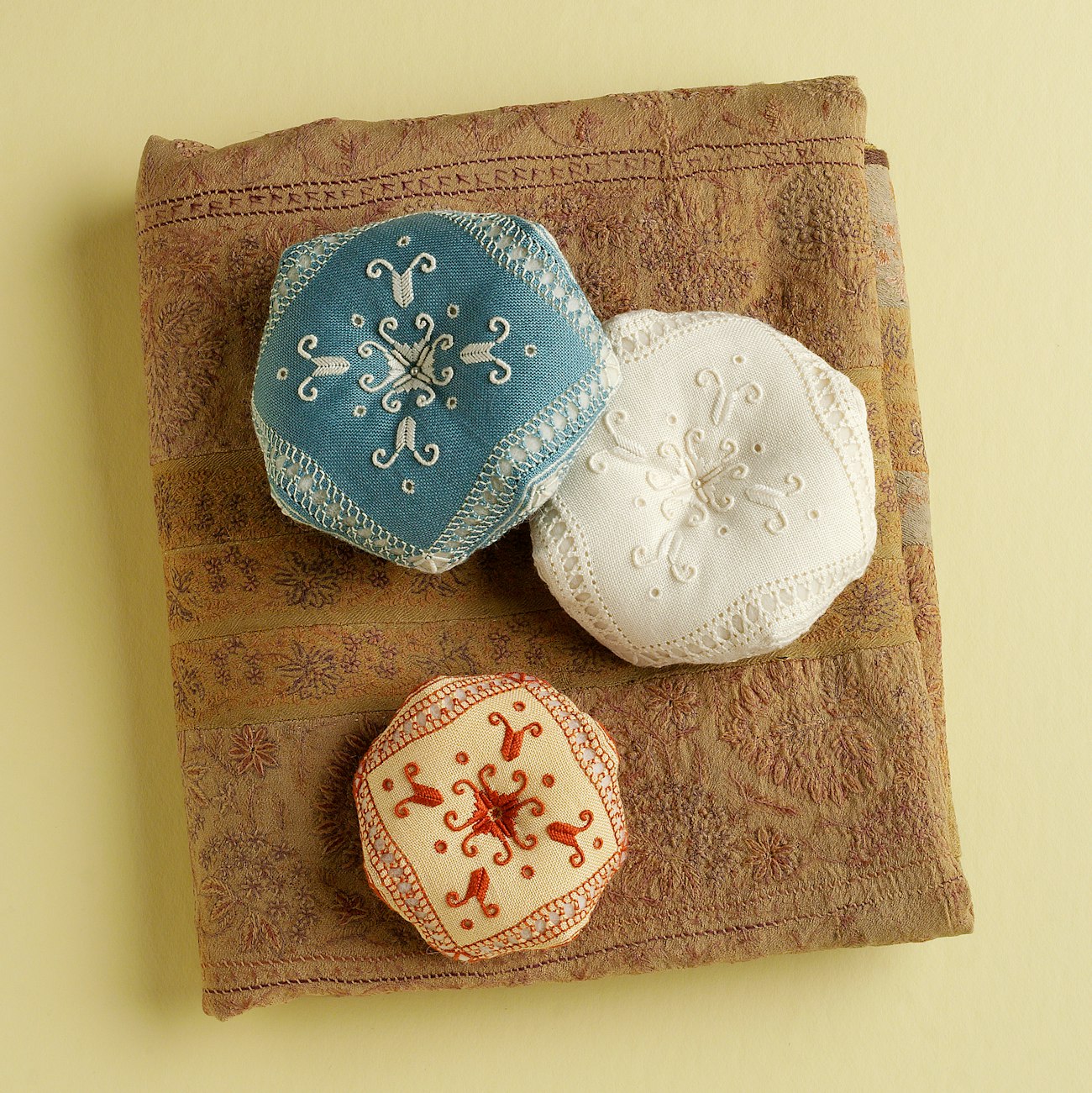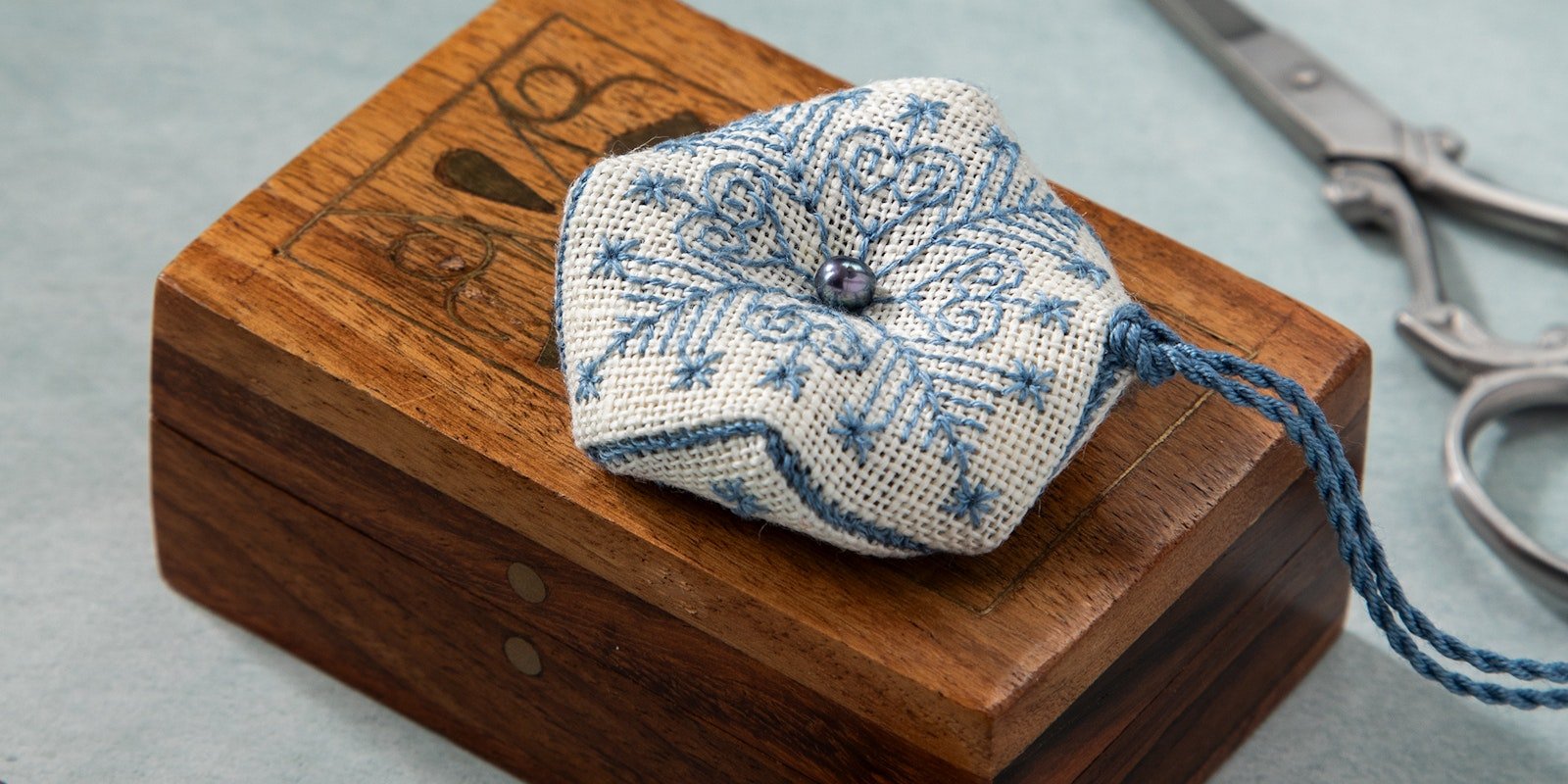Biscornu—those quirky, eight-sided decorative cushions—have become beloved little novelties among needleworkers over the past few decades. Made by stitching two squares together with offset corners, this little cushion transforms into a charming, three-dimensional form that’s part pincushion, part ornament, and entirely captivating. Though its name comes from the French word for “irregular” or “quirky,” the biscornu has found a beloved place in embroidery circles worldwide—both as a practical tool and a wonderful canvas for creative stitching. But when did these delightful cushions first make their appearance in the world of needlework?
Origins?
Despite all my digging, I couldn’t find any solid evidence as to the origins of the biscornu. The earliest known examples of biscornu-style designs appear to date back to the nineteenth century when European needleworkers may have crafted similar pincushions—but the true origins remain elusive. We do know, according to Dorothy Panacek in her September/October 1999 PieceWork article detailing the history of the pincushion, that as early as the sixteenth century, women stuffed small pillows with wool to store their needles.
The charming final chapter of Eleanor Longman’s 1911 book, Pins and Pincushions, builds on Dorothy’s article. In this lively tribute to one of needlework’s most essential tools, Longman highlights pincushions from the Elizabethan era to Queen Victoria’s time and beyond, noting little change in the shape of pincushions until the 1800s:
"Knitted pincushions, mostly round, came in about the middle of the eighteenth century, but the spirit of caprice did not really touch these articles till the beginning of the nineteenth century, and from then till now has pursued its fantastic progress until there is scarcely anything a pincushion has not been made to represent."
ADVERTISEMENT
With utmost enthusiasm, she details the fine needlework, the silk ribbons, the floral and fruit motifs, the silver-gilt thread, the beadwork, and the whimsy. Spending time with Eleanor and her enthusiastic celebration of the pincushion serves as a poignant reminder that even the humblest needlework tools can offer a fascinating window into daily life and history across centuries.
Sewing, Shaping, and Showing Off a Biscornu
To make a biscornu, offset the corners of two fabric squares, whipstitch them together, and then stuff them to form a plump, eight-pointed shape. Stitchers often attach a button or some type of small ornament at the center, pulling the front and back together to accentuate the shape. Each side of the pillow can be embroidered, but at least the top side is embellished. The embroidery is often a counted thread technique, such as cross-stitch or blackwork, but a variety of other stitch techniques work, too.
Usually, a biscornu functions as a pincushion, but they can also be used as a sachet or pomander filled with your favorite scents. They could be paperweights or Christmas tree ornaments. How do you use yours? Write to us and share photos of your quirky cushions here.
Haven’t made a biscornu yet? Let us help you out with these patterns from PieceWork:
If you like the project at the top of the post, check out the "Small Stitches" project inspired by Jane Austen's Northanger Abbey, page 48, in our Spring 2025 issue.
Heraldic Rose Biscornu from PieceWork March/April 2015, page 28 or, Get the pattern here.

Sardinian Heart Biscornu PieceWork March/April 2015, page 13

Punto Antico Biscornu PieceWork March/April 2015 and Get the pattern free!

Happy stitching,
Karen Brock is the editor of PieceWork.

